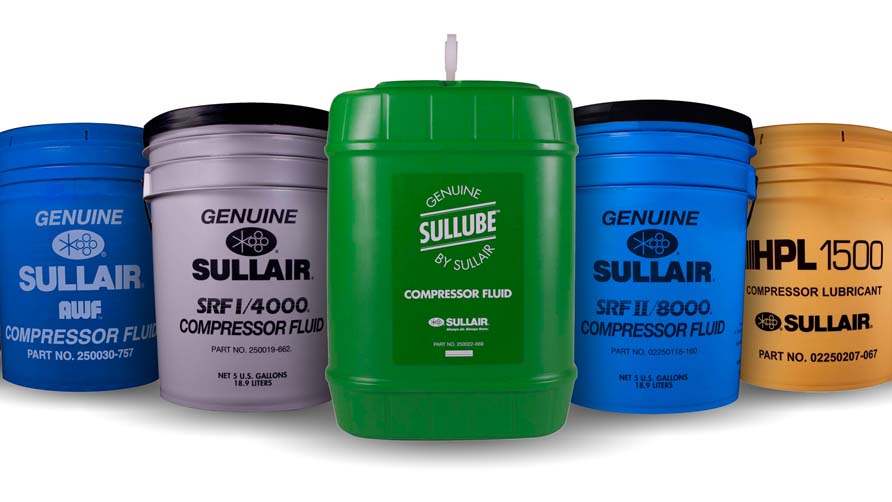
By John Moore & Sullair Australia
Air compressor lubricants or oils are the lifeblood of an oil-flooded rotary screw air compressor. With such an important role in the operation of an air compressor, it’s essential to understand what compressor lubricants do and how they do it.
Lubricants help lubricate bearings, create a film that causes an airtight seal for the rotors, and dissipate and control heat caused by the heat of compression. There are four important features when selecting a lubricant:
- Operating varnish free – varnish is the leading cause of air end failure. Varnish leads to higher temperatures and inefficiency.
- Low carryover – more top off fluid per year costs money.
- High flash point – a high flash point is necessary for safety. Be cautious with Hydrocarbons, as they can be dangerous.
- Good compatibility with air systems – if the fluid is incompatible with the solenoids, seals, hoses, gaskets, or downstream materials, it could cause leaks and damage. Be cautious with lubricant choice, however, and always check material compatibility before use.
Any lubricant using a hydrocarbon base compound will create varnishing on your rotors. All the components of the lubricant are liquid at ambient temperature, but when they are heated to higher temperatures, some of the components can become solids. This causes them to plate out on metal parts and act as an insulator, which reduces the ability to remove heat. This problem will exacerbate as temperatures become higher.
Higher temperatures will shorten the life of the lubricants. Every 10°C above 93°C reduces the lubricant’s life by 50%. To determine the lifespan of your lubricant, follow this simple equation:
- Determine the amount of time the machine has been consistently running above 93°C
- Double the time and subtract it from the related life. For example, a compressor using 8,000-hour a year lubricant ran three months above 93°C
- Subtract 6 months from the 8,000-hour life
- In this example, the lubricant goes bad at 4,000 hours
Carryover is especially important because this will increase the amount of lubricant needed to top off the compressor to keep it properly lubricated. Often overlooked are the issues with increased downstream compressed air filter element changes; lubricants getting into highly sensitive process equipment; and disposal of contaminated condensate.
Good compatibility is needed when selecting a lubricant because the lubricant may not be compatible with hoses, gaskets, water separators and any downstream equipment. Often failures will occur, but the root of the problem cannot be traced back to the lubricant. Once the lubricant has contaminated the air stream, it is often impossible to remove, which ends up being extremely costly in time and money to correct the problem.
Without the proper lubricant, you can substantially reduce the life of your oil-flooded rotary screw air compressor. To know if the correct lubricant is being used in your air compressor, an evaluation should be conducted. A simple oil sample can determine the health of the compressor lubricant.
Sullair recognises the importance of providing the best fluids, and the use of OEM specified lubricants and spare parts. In fact, the strength of your warranty is dependent on issues such as this, with regard to the ongoing care and maintenance of your equipment. A lubricant specialist can not only help determine the type of lubricant you need but identify any issues that have been caused by using the wrong lubricants.
Interested in finding out more?
To find out more, talk to our service and repairs team here.



















